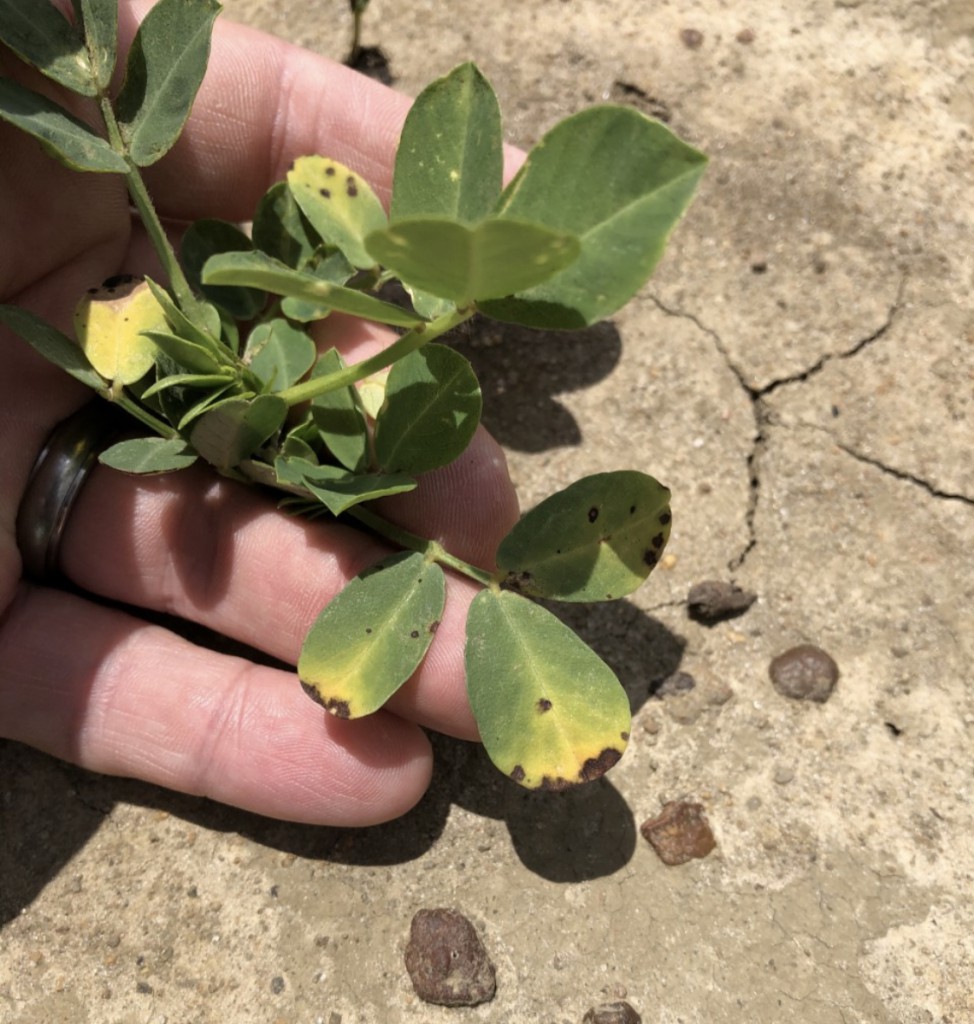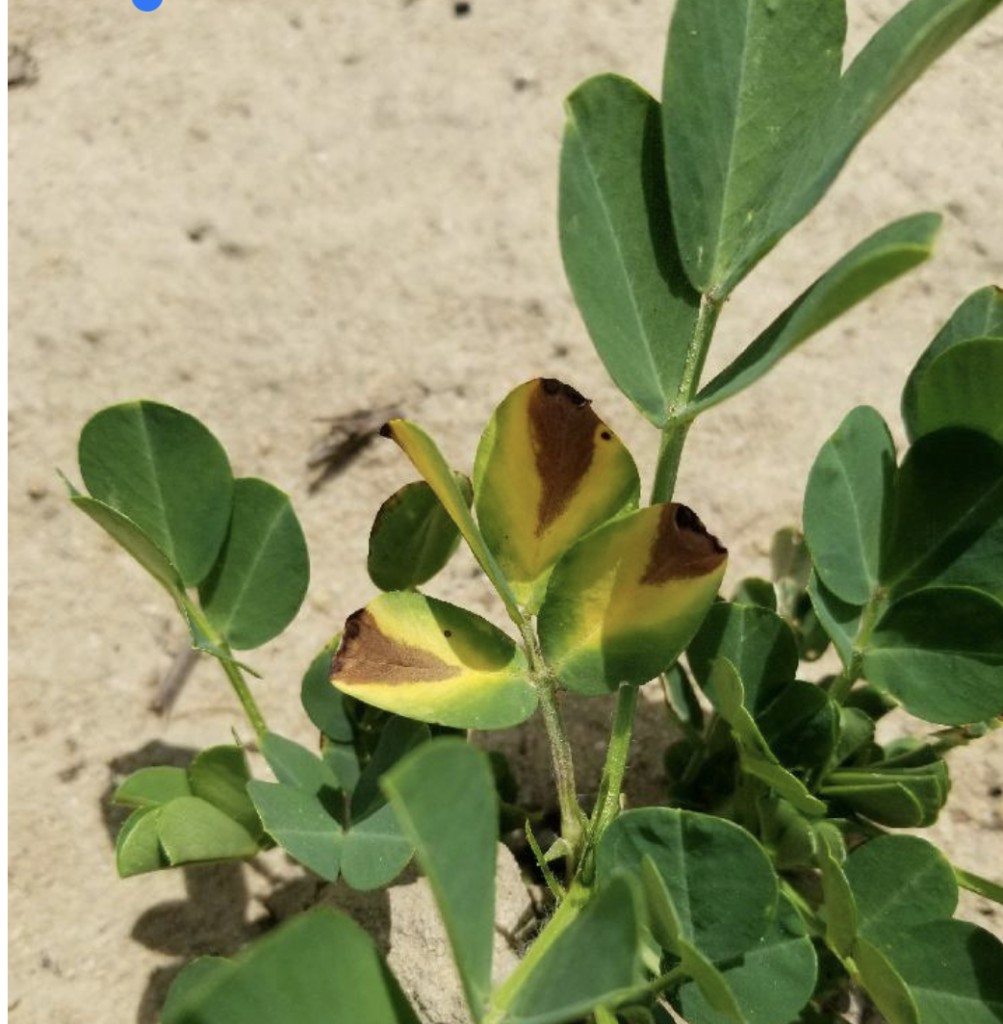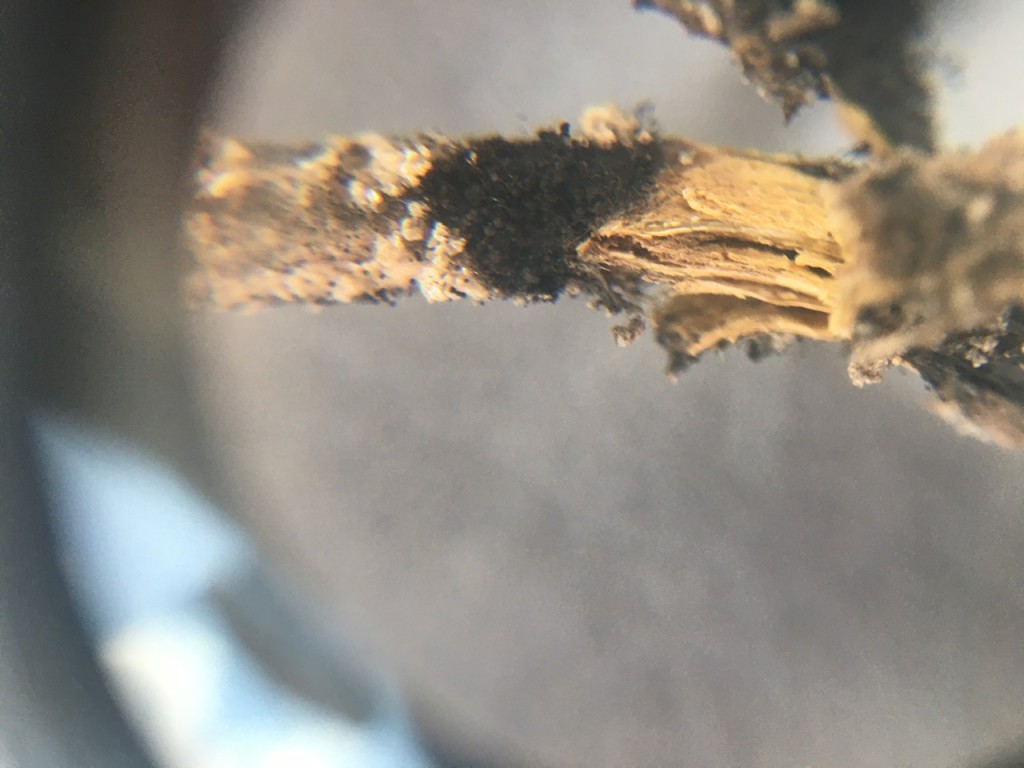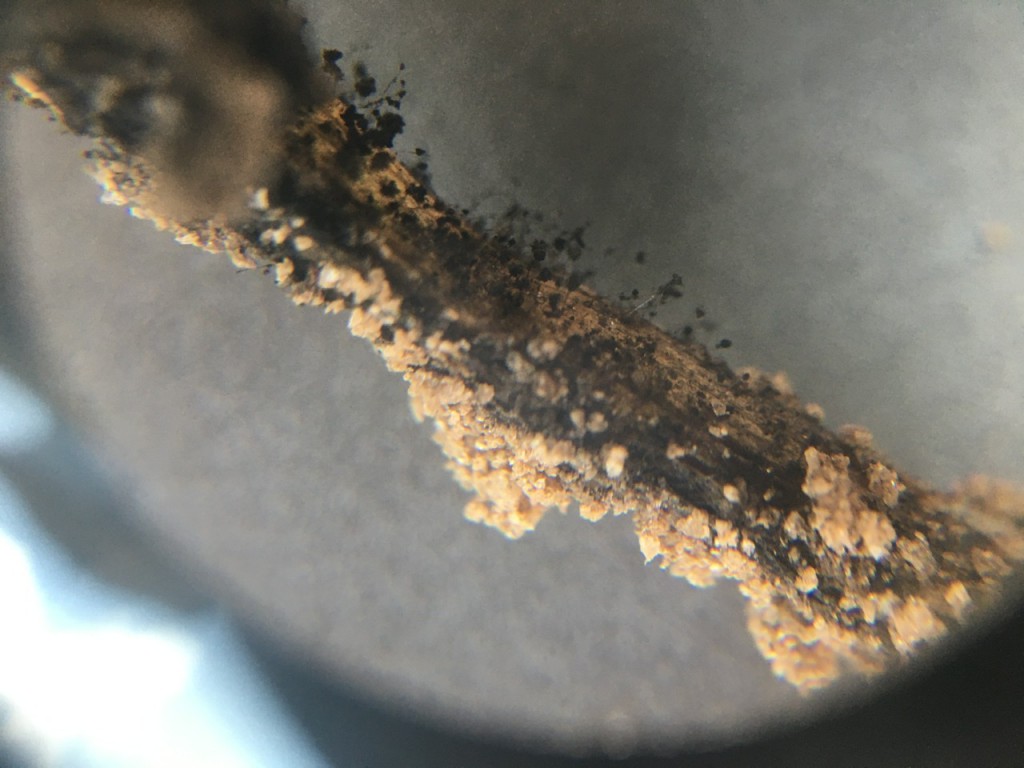Greetings!
Please read below for several updates from Dr. Bob Kemerait, UGA’s Extension Plant Pathologist, regarding the status of row crop diseases in our area:
Fig. 1: Many of you are familiar with the injury that results when Thimet is used in-furrow on peanuts (yellowing and small spots along the edges of the leaves), but some growers may not be. Such symptoms are cosmetic injury from use of Thimet and are proof the product is in the plant and doing its job.

Fig. 2: Scorch-like symptoms with a distinctive “V” on young peanut foliage is either the result of Leptosphaerulina leaf scorch or from use of Thimet in-furrow at planting. If the symptoms are wide-spread in a field, it’s more likely Thimet or other chemical injury. If symptomatic leaves are more limited, it may be leaf scorch. Either way (chemical injury or leaf scorch) it is cosmetic and doesn’t need additional treatment or concern.

Fig. 3-5: The next images are of young peanut plants severely affected by Aspergillus crown rot. Diagnostic symptoms include 1) rapid wilt of plants SCATTERED in the field, 2) shredded tissue in the crown of the plant, and 3) often, but not always, black, sooty sporulation in the damaged area. With temperatures near 100 over the next week, expect to see more of this.



Fig. 6: Conditions are favorable now for white mold, especially in fields with short rotation. Beginning a white-mold program early this year, even if only mixing tebuconazole with chlorothalonil on the first spray, may be a good decision.

Fig. 7: The first Tomato Spotted Wilt I’ve seen on peanut this year, in Colquitt County. Georgia-06G, planted late April, imidicloprid in-furrow.

Fig. 8: Corn leaves covered in burnt-orange pustules on older, lower leaves. This is “common corn rust”. Puccinia sorghi. This disease (unlike southern corn rust) is often confined to older lower leaves and forms pustules on both sides of the leaf. It is NOT a threat. Southern corn rust IS a threat, but we have not found it in Georgia this year YET, but I expect it any time. Hot weather is favorable for it. We are watching. Reports continue of small amounts of Northern corn leaf BLIGHT, but nothing I would treat for. Yet.

Fig 9: This picture is from our corn specialist, Dr. Corey Bryant, of young corn smut in Tifton. Corn smut is usually incidental, not worth treating.

Soybeans: From our soybean rust sentinel plots (kudzu in these reports), we found soybean rust for the first time in 2021 in Brooks, Turner, and Dooly Counties. This is, I believe, the beginning of a “jail break”. Soybean growers should be aware that when their beans begin blooming there may be an advantage in using a fungicide.
Fungicides: I have been hearing whispers and rumors that there will be a shortage of fungicides this summer. Reasons given include 1) manufacture and delivery issues around Covid and 2) hoarding by mid-western corn and bean farmers. To be honest, I don’t know how much of this is true. From my conversations with my contacts in the Ag Chem Industry, most believe there will be adequate supply of the fungicides growers need for protecting peanuts, cotton, corn and soybeans. Dr. Abraham Fulmer did mention that supply of Priaxor could be a little tight, so it never hurts to check. But, bottom line: the Fungicide Sky is not falling.
Based upon peanut leaf spot work done by Dr. Albert Culbreath, sulfur as a mix-partner with fungicides like Umbra, Excalia, tebuconazole, azoxystrobin, and Headline has gained significant interest among growers. Irwin County’s finest, Philip Edwards his 2020 summer intern, found that Umbra + sulfur was at least as good as Umbra + chlorothalonil for leaf spot control. HOWEVER, as of now, we are talking about SPECIFIC formulations of sulfur and NOT all sulfur. 1) Microthiol DispersS, Microthiol 80W, Drexel Sulfur 80W, Drexel Suffa 6F TechnoS 90W, and Accoidal 80WG have been tested and are recommended at 5 lb/A as mix partners. In some specific situations, as low as 3 lb/A (not lower). 2) Sulfur formulations NOT mentioned here are NOT currently recommended because they have not been tested for leaf spot control or because they were less effective.
As always, if you have any questions about identifying a problem in your field or which fungicides to spray, please give me a call or contact your local County Agent.